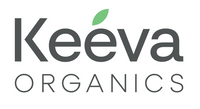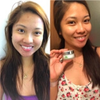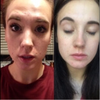
One thing most of us have in common is acne. Acne is the most common skin condition in the United States that affects millions regardless of age. Acne occurs when the skin follicles that connect the pores and oil glands get clogged due to the excessive production of sebum (oil produced by skin). Though acne is considered harmless, it’s essential to recognize the different forms of acne and understanding the cause and treatment of your particular type. So let’s get started.
1. Whiteheads
Whiteheads are the earliest visible stage of a pimple. Whiteheads form when hair follicles or pores get clogged with dead skin cells and excess sebum causing a small, raised, white bump. The white color comes from the distillation of your sebum’s fatty oils and piles up of white blood cells that your body sends to resolve a pimple. Whiteheads are categorized as non-inflammatory acne, which typically is not inflamed, however, if they are left untreated, an infection can occur.
2. Blackheads:
Like whiteheads, they are formed when pores become clogged with sebum, however unlike whiteheads which are closed; they are open at the surface. The black color comes from the sebum coming into contact with oxygen and becoming oxidized. Blackheads are typically hard and small but can grow in size and lead to a cyst forming underneath the buildup, far below the skin surface.
Treatment:
Although whiteheads and blackheads are a mild form of acne, these pesky little bumps can be very bothersome. The best way to treat whiteheads and blackheads is to exfoliate; using products such as Keeva Organics Acne Serum which contains only natural ingredients such as tea tree oil which will help to reduce bacteria.
3. Pustule:
Pustules are your typical pimple – filled with a white or yellowish tip caused by the buildup of dead skin, sebum, and white blood cells and are usually tender and painful. Unlike whiteheads and blackheads, the buildup goes deeper into the root of the pore which makes it harder to clear out.
Treatment:
Natural ingredient products such as Keeva Organics Acne Cream Treatment will help to fight bacteria and infection.
Share this Image On Your Site
4. Nodule:
Nodules are a more severe type of acne; they are characterized as large, inflamed bumps that are sensitive to touch. Nodules are filled with pus and bacteria far deeper in the skin surface. When left untreated, nodules become further infected and abscess and can lead to more nodules in the surrounded pores.
Treatment:
For nodules, an antiseptic product containing tea tree oil such as Keeva Organics Acne Treatment or Keeva Organics Acne Face Wash will help to sooth the lumps and prevent infection from occurring.
5. Cysts:
Cysts are also a very severe type of acne, they are large and inflamed and typically known to last for months. These large lumps are formed beneath the skin and are often extremely painful. Cysts occur when the follicle breaks along the base and the follicle collapses completely causing an inflamed bump that is hard to touch.
Treatment:
While keeping your skin clean is very important, if you ever encounter cysts, consult with your dermatologist. Prescription drugs may be more effective than over-the-counter medication.
Which acne do you have? Now that you are familiar with the different forms of acne, you can properly treat these spots for clearer skin!








 Verified Purchase
Verified Purchase



